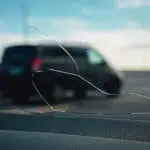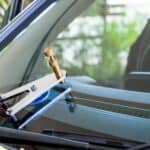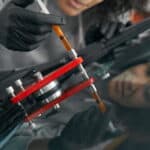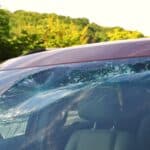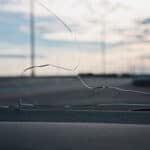Everyone who has had a windshield repaired knows the importance of taking steps to prevent future damage. Ensuring the longevity of a repair not only involves careful immediate aftercare but also adheres to long-term maintenance practices. This guide will explore how to effectively prevent future damage after your windshield has been professionally repaired, keeping your view clear and your travels safe.
Understanding Windshield Repair
A typical windshield repair involves the application of a special resin into the chipped or cracked area under pressure, which is then cured and polished to restore the structural integrity and clarity of the glass. After having their windshield repaired, many drivers might not realize the critical nature of the first few days. For example, one should avoid jarring the vehicle by driving on rough roads or slamming car doors, as this can disrupt the curing process.
- Do not wash the car for at least 24 hours.
- Avoid rough roads to reduce pressure on the new repair.
- Keep the car in a shaded area if possible to avoid direct sunlight on the new resin.
Immediate Aftercare Tips
Immediately following a windshield repair, certain actions should be taken to ensure the repair sets correctly without issues. The adhesive used in windshield repairs needs time to cure fully—a process that can take several hours to a day depending on the adhesive used and weather conditions. While tempting, rolling down windows and blasting the car heater can interfere with this process.
- Keep windows slightly open to avoid pressure build-up.
- Avoid using the car’s heating or A/C on high for the first day.
- Park under cover to avoid temperature extremes affecting the cure.
Regular Maintenance Practices
Maintaining your windshield properly extends beyond merely keeping it clean; it involves careful attention to the glass’s integrity and immediate surroundings. Regular inspections can catch potential problems before they necessitate another repair or a full replacement, which can be costly. Here are some key maintenance tips:
- Clean the windshield with glass cleaner and a microfiber cloth regularly.
- Inspect the windshield routinely for any new chips or cracks.
- Apply a water-repellent coating to help maintain visibility in bad weather.
Driving Tips to Avoid Damage
While on the road, how you drive and the environments you choose can significantly impact the likelihood of sustaining further windshield damage. Drivers should practice defensive driving techniques and be aware of the distance between their vehicle and those in front, especially on highways or in areas with loose gravel. Seasonal changes also necessitate different approaches to care:
- Increase following distance from other vehicles, especially on gravel roads.
- Avoid following construction vehicles or trucks carrying debris.
- Drive cautiously around areas where road work is being performed.
Using Quality Wipers
Windshield wipers play a crucial role in maintaining the integrity of your windshield’s surface. Old, worn-out wipers can cause scratches on the glass that may lead to cracks and require repairs. Therefore, selecting the right wipers and replacing them regularly is essential.
- Replace windshield wipers every 6-12 months or sooner if streaking begins.
- Choose wipers that conform to the curve of your windshield.
- Avoid using wipers to remove ice or heavy snow; use a proper ice scraper.
Addressing Small Issues Early
Addressing minor issues before they escalate is crucial in windshield maintenance. Small chips can turn into large cracks if temperature fluctuations occur, potentially leading to more extensive damage that is not only more expensive to repair but also more dangerous. Acting swiftly upon noticing any damage can save time and money:
- Schedule a repair as soon as a chip is noticed.
- Consult with professionals about the best repair options.
- Regularly check the edges of the windshield as they are prone to chips and cracks.
Legal Considerations and Insurance
Many drivers are unaware of the legal implications of driving with a damaged windshield. In many regions, it is illegal to drive with a windshield that significantly impairs the driver’s ability to see the road. Insurance policies might cover windshield repair, so understanding your coverage can save you money and maintain your compliance with local laws.
- Review your insurance policy to understand what is covered under windshield repair.
- Keep documentation of all repairs for insurance purposes.
- Check local laws to ensure compliance with visibility requirements.
Key Takeaways for Windshield Repair Care
- Regular maintenance and immediate aftercare are crucial.
- Use high-quality wipers and replace them regularly.
- Address minor damages immediately to avoid larger issues.
Frequently Asked Questions
What should I do immediately after a windshield repair? Immediately after a repair, it’s best to avoid any stress on the windshield. Do not wash the vehicle or drive on bumpy roads for at least 24 hours.
How often should I replace my windshield wipers? Windshield wipers should be replaced every 6-12 months, depending on their condition and your local climate conditions.
Is it necessary to use special products for windshield care? Using auto glass cleaners and water repellent products can enhance visibility and protect your windshield from the elements.
What is the best way to prevent windshield damage while driving? Maintaining a safe distance from other vehicles, especially on roads with loose debris, and avoiding following trucks carrying potential windshield hazards are best practices.
Can small windshield chips be safely ignored? Ignoring small chips can lead to larger cracks. It is advisable to get them repaired promptly to maintain the structural integrity of the windshield and ensure safety.
By adhering to these practices and understanding the importance of windshield care, drivers can significantly reduce the risk of future damage and ensure their vehicle remains safe and compliant with road safety standards.
Elite Windshield Repair LLC provides fast, reliable vehicle windshield repair services, specializing in fixing chips and cracks up to 10 inches. Founded in 2024, the company offers free mobile service across the North and South Shore, ensuring convenience for every customer. With a focus on quality, Elite Windshield Repair guarantees customer satisfaction by providing a 1-year warranty on all workmanship. The company also offers headlight restoration and windshield wiper replacements to keep your vehicle in top condition. Locally owned and operated, Elite Windshield Repair is committed to delivering exceptional service with every repair.



